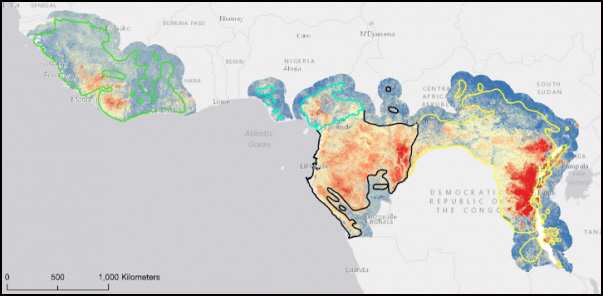It costs a lot of money to protect endangered animals. Not only is it expensive to implement conservation strategies, but before we even get to that stage, we need to pay researchers to monitor and track illusive species to figure out exactly where they live.
But now researchers at Queensland University of Technology in Australia have come up with a way to predict, locate, and track endangered species without ever having to leave the lab - entirely through virtual reality.
By creating an immersive environment, scientists are now able to explore exotic ecosystems, such as the jungles of Borneo or the savannahs of Africa, and use the platform to work out which habitats are most likely to house endangered species, and therefore which are most critical to protect. Think of it like the 2009 film Avatar, but without the big blue body.
These conservation decisions are currently based on habitat suitability maps, which simply tell researchers about the plant cover and terrain in a certain region, and look something like this one, created for chimpanzee populations:
 Jane Goodall Institute/University of Maryland/NASA
Jane Goodall Institute/University of Maryland/NASA
As you can imagine, it's pretty hard to base conservation strategies on that information, which is why the scientists felt it was so important to create a cheap and easy way for researchers to see and experience the habitats for themselves.
"It's expensive, time consuming and sometimes dangerous to physically obtain data describing these elusive creatures," said project leader and mathematician Kerrie Mengersen. "Habitat suitability maps are very sketchy and the potential conservation areas are huge. Our project aims to fill the gap in the evidence for deciding which areas to preserve."
The virtual reality platform was created from data collected during Mengersen's field expeditions in Africa, Indonesia, and Australia. She's now also started collecting high-resolution, 360 degree footage, along with sound recordings, on her trips. And software engineers can then turn this information into a 3D, immersive environment, ready to be explored using the Oculus Rift.
Here's an example of what some of that incredible footage looks like, featuring a wild orangutan swinging through the rainforest in Borneo:

The project has already been used to successfully predict the location of critically endangered rock wallabies in Australia, and the team is now expanding the experience to include habitats of other species, such as koalas, cheetahs, Sumatran orangutans, and sun bears. The results of the first case study have been submitted for publication in Spatial Statistics.
"These wallabies live in inaccessible places and are rare. However, working with ecologists' data, we built a predictive model into a virtual reality environment and used it to locate where the habitat exists across a broad landscape," Mengersen explained. "By giving the wallaby population experts in the trial a way to see across a broad area - through computer generated imagery of the landscape - they were able to determine the likelihood of wallaby habitat."
Unfortunately, unlike Avatar, the researchers don't have free rein to run around and explore the virtual reality environment. But what's just as cool is the fact that instead, they get to fly over them.
"The game engine interface uses a helicopter metaphor: that is, flying through the air in predefined lines, mimicking the experience of environmental modellers when assessing sites," said Ross Brown, one of the engineers who created the virtual reality software.
The software is also run in real-time, so it gives the researchers the ability to give opinions on the likelihood that an endangered species lives in a particular habitat as they go.
"It's like looking at the film but doing more than looking," said Mengersen. "It's extracting information and feeding it into a model that can be used to analyse, predict and conserve."
We can't wait to see how this new software helps to improve conservation science. And we kinda hope that one day we get to try it ourselves too.
Love science? Find out more about studying at Queensland University of Technology.